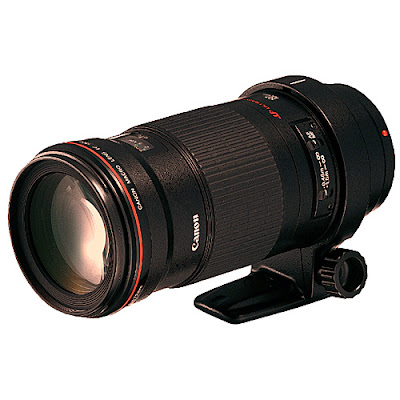Many people wonder why professional photographers make such big fuzz about focus and sharpness when to them everything seems alright with the picture; it seems perfectly exposed, well composed and so on. But to a real professional, no matter how perfectly the rest of the elements have come together in the picture; if it’s not sharp then rest doesn't matter. Interesting to note that they have also coined a word for the perfectly sharp picture, they call it ‘tack sharp’! Getting tack sharp images every time is a challenge and could only be done by doing a multitude of things right. It’s a combination of the right gear and the right technique that makes it possible.
 |
| Tack Sharp Photograph |
The five major factors responsible for un-sharp images are camera movement, subject movement, poor or incorrect focus, not having enough depth of field and noise. For the purpose of this article we assume that you are shooting a stationary subject, so that eliminates subject movement. Towards the end of this article we will discuss tips to take sharp photographs of moving subjects. Now let’s move on to our main discussion.
Getting "Tack Sharp" Images Starts by Using a Tripod
Getting tack sharp images is not an easy task. To achieve the ultimate level of sharpness, you need to get several things right; and the most important tool that will help you do it is a tripod. Using of a tripod is one thing that separates the professionals from amateurs; they take that extra effort of carrying it to work and set up their shots carefully even when shooting in daylight. A tripod is no magical wand it’s one and only function is to keep the camera steady during an exposure and thus eliminate camera shake completely.
 |
| Tripod |
Never skimp on quality when buying a tripod, always buy a strong sturdy one, and also do consider the weight of the tripod because if it’s too heavy you might not feel comfortable carrying it around whole day. A carbon fiber tripod is both sturdy and light weight but costs more, so buy one that’s the right balance between weight and cost.
A Ball-head will Make Setting up Your Shots Much Easier
Cheap tripods often come as a complete system; whereas in case of professional models you will have to buy the legs and head separately. There are many types of tripod heads but the one that’s very easy to set up is the ball head. With a ball head you only have to turn one knob to quickly position your camera accurately at any angle.
Choosing a ball head over any others won’t make your images sharper but it will make taking shots easier. Like tripods quality matters in ball heads too and they don’t come cheap! It is better to invest in a good quality one as cheaper ones often fail to keep your camera locked into position and they creep (slowly slide one way or the other) especially when heavy lenses are mounted.
Don't Press the Shutter; instead Use a Cable / Remote Release;
Tripod is only one part of the story; there are many other ‘ghosts’ that can scar the sharpness of your precious images. The very act of pressing the shutter button can induce camera shake and affect sharpness adversely. The trick to eliminate such shake is to use a cable/remote release. This is simply a cable that attaches to the camera; it has a button on the end of it.
 |
| Cable Release |
When you press this button on the end of the cable, it takes the photo without touching anything else. These days most cameras have the provision to use wireless remote release systems. The good news is that basic models only cost a few dollars.
Forgot Your Cable Release? No Worries, Use the Self Timer
There is one feature built in your camera that allows releasing shutter without physically touching the camera; the ‘self- timer’. In earlier times it was a 10 second delay timer mainly used to allow the photographer to get into the frame himself, but now most cameras have a 2 second self-timer that is specifically for the complete elimination of vibrations by providing an easy way to trigger the camera without physically touching it.
Mirror Lock-Up for Ultimate Sharpness
If you examine how a DSLR works you will find that there is a mirror that sits in front of your shutter that reflects the light coming from the lens on to the viewfinder (through the focusing screen and the penta prism).
When you press the shutter release button; right before the exposure is made, the mirror swings up causing the light rays to go straight to the sensor where it gets recorded; at the end of the exposure, the mirror returns to its previous position. This movement of the mirror which is located inside the camera, very close to the image sensor induces minute vibrations.
Most modern cameras have a ‘mirror lock up function’, which will help you eliminate shake caused by the mirror. You may wonder; is it that important and the answer is yes it is; in fact mirror lock-up comes second only to a solid tripod in minimizing vibrations. So look up mirror lock up in your cameras user’s manual and familiarize yourselves with the controls.
Remember, when you have enabled the mirror lock up function; you will have to press the shutter release button (either on your camera or on your remote or cable release) twice: once to lock up the mirror, and then a second time to actually take the shot.
Although mirror lock up is only a minor thing to make any big difference; but when you add this to everything else discussed in this article, it's another step toward to attain that ‘tack sharp’ nirvana.
Good Glass Does Make a Huge Difference
Sometimes getting tack sharp images requires more than making fine adjustments in the camera or a change in your shooting technique. To get results like the ones produced by professional photographers, you should possess and skillfully use the same quality tools the professionals use.
 |
| Canon 180mm Macro |
Yes; no doubt good glass costs a fortune, but they give results; what their cheap counterparts can’t ever match. When making purchase decisions; always opt to buy the better (if not the best) quality ones. In my opinion lens is more important than the camera as the camera’s sensor could only record what is being transmitted to it and the quality of the transmitted image depends upon the quality of the lens mounted at that time. Digital cameras get outdated fast; that is not the case with lenses; Take good care of your lenses they are an investment that could last for a life time. A wise investment made in lenses goes a long way in achieving that ‘tack sharp shots’ you have always craved for.
Shoot at Your Lens' Sharpest Aperture
Every lens has a sweet spot, a particular aperture setting in which the lens performs best, giving maximum sharpness. It is usually an aperture in the middle of the range so for lenses that go from f/2.8 to f/32 the sweet spot will be f/8 or f/11 and for a lens that goes from f/4 to f/22 the sweet spot will be f/8 and so on.
Another easy method which is applicable for most lenses is; to shoot at an aperture that is about two full stops smaller than wide open. So for an f/2.8 lens the sweet spot will be f/5.6 and for an f/4 lens the sweet spot will be f/8.
 |
| professional techniques to take sharp digital images |
All the methods given above hold true for most lenses but not for every ones. It is better to shoot the same subject at different aperture settings; while keeping every other setting the same, observe the images at 100% and determine which one gives the best result for that lens.
Remember the primary reason for choosing a particular aperture setting will be depth of field; but if a particular situation allows you to use any aperture you wish and your intention is to produce the sharpest image possible, you better know which aperture to use.
Turn Off Image Stabilization / Vibration Reduction
Canon calls its devise for reducing vibration as ‘Image stabilization’ or (IS); for Nikon it is simply ‘Vibration Reduction’ or (VR mode). Whatever the names; their duty is to reduce effects of vibrations while hand-holding the camera. In low-light situations when slower shutter-speed becomes a must; vibration of any sort can hamper the quality; this V R mode is a real boon to get sharp pictures.
This is an advanced feature where lenses with floating elements make counter movements to nullify the vibrations caused by hand movements (by moving in the opposite direction).
IS or VR works great when handholding the camera, they are helpful even when there is enough light and faster shutter speeds are used, also come in handy when you are shooting from a moving platform like a car, train etc. But when the camera is mount on a tripod better turn it off; because lens may be chasing a non-existent vibration to counter balance; and some vibrations may occur in that process affecting sharpness.
Avoid Increasing Your ISO, Even in Dim Light
Modern cameras can handle high ISO’s really well and produce perfectly usable images with little or no noise, for best results you should always stick to the lowest ISO setting in your camera. Because you want not a good image but the best!
Zoom In to Check Sharpness
The LCD screen on the back of the digital camera could be at times very deceiving. When you playback an image on the LCD at the small size; it looks sharp but when you later review the image in a bigger screen things may not be that sharp. To avoid this embarrassment; use the zoom function to magnify the playback image at 100% and check it’s quality then and there. This spot checking gives you a chance for retake if there is anything wrong with the picture.
Custom Quick Zoom Settings
Some of today's digital SLR cameras have a ‘quick zoom option’, where you can program a button on the camera to a particular point of zoom; this could speed up your review of pictures. For example if you always check your images for sharpness at 100% zoom; program this button to take you to 100% zoom with a single press. No need of pressing the button multiple times or keeping the button pressed for a long period of time. Check your owner's manual to see if your digital camera has a custom quick zoom setting.
Moving Subjects
Now that we know how to take the sharpest possible picture, let’s move on to the next challenge that is shooting moving subjects.
Shooting a moving subject is an entirely different ball game, depending on what your intention is, whether it is to freeze motion or to capture motion. If your intention is to capture motion then it’s just the same as shooting still subjects and all of the tips mentioned above are applicable. But In most instances like sports and wildlife photography the intention of the photographer is to freeze the action. In such cases the most important factor is the shutter speed and the use of tripod is ruled out and so it’s time for us to understand the rule of thumb for hand holding the camera.
Hand-Held Sharpness Trick
There is a certain rule of thumb for shutter speeds to get sharp pictures; it suggests using a shutter speed faster than the focal length of the lens used. So if you are shooting with a 50mm lens use 1/60 as your minimum shutter speed and if you are shooting with a 200mm lens, shoot at 1/200 minimum to ensure sharp pictures.
While considering the focal length of your lens you should factor in the crop factor if you are not using a full frame camera. Read more about Crop Factor here.
Another very useful trick for shooting handheld in less than optimal light; shift your shooting mode to continuous and shoot in bursts instead of single images. The ones in the middle of the burst will mostly be sharper than the rest.
It is good to know that you need to use a minimum shutter speed that is equivalent to the focal length of the lens used, but that is not all, one should also consider the speed at which the subject moves and also its direction, whether it is moving across the frame (from left to right or right to left) or is it coming towards your or going away from you.
The faster the subject moves the faster the shutter speed required to freeze the movement and vice versa. Similarly a subject moving towards or away from you will require a much faster shutter speed than one that’s moving across the frame from one direction to the other.
In photography there are always limitations, we are always working with a particular amount of light, so one thing that you need to understand is to use a shutter speed that could completely freeze the motion for example for casual human movement a shutter speed of 1/100 is sufficient, using faster shutter speeds cannot freeze the image any further. So always use only as much as needed as by doing so you have the advantage of having more choices in the areas of aperture and ISO.
Sharpening After the Fact in Photoshop
So far we have discussed the in camera tricks to get sharp images, now we will look to the post production side and see how best we could sharpen our images. Most professionals use the Adobe Photoshop’s Unsharp Mask filter to sharpen their images.
One might think that something named ‘unsharp’ would make your photos blurry; don’t worry, the name is just a holdover from traditional darkroom techniques, so don't let that fool you. Using it is easy;
open your photo in Photoshop, then go to Filter > Sharpen > Unsharp Mask.
A dialog appears, with three sliders for applying different sharpening parameters, here are certain settings that work well for the most common subjects/scenes.
- People: Amount 150%, Radius 1, Threshold 10
- Travel: Amount 65%, Radius 3, Threshold 2
- General: Amount 85%, Radius 1, Threshold 4
Professional Sharpening Technique
The technique professional photographers use to sharpen their images without causing nasty halos and other color artifacts is by using the Lab color mode, lightness channel and the unsharp mask filter.
1. Open your picture in Photoshop
2. Go to Image > Mode > Lab Color
3. Go to the Channels palette and click on the Lightness channel. (Lightness channel contains only the detail and not the color in the photo, thus allowing you to eliminate some of the color problems that occur when you sharpen the full-color photo.)
4. Go to Filter > Sharpen > Unsharp Mask (refer the previous section for settings)
5. Try applying the Unsharp Mask filter again, using the same settings. If your photo appears too sharp, go under the Edit menu and choose Fade Unsharp Mask. In the Fade dialog, lower the Opacity slider to 50%, so you reduce the strength by halfon the second application of the filter.
6. Go to Image > Mode > RGB Colour.
Once you get the hang of it, it’s pretty easy stuff.
While working in the field it might not always be possible to do everything that we have discussed in this article, but even if you do some, you will definitely notice an improvement in the quality of your photographs, so try and get as many things right as possible.
Post a Comment